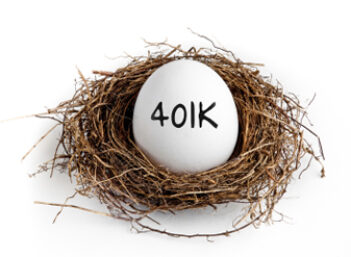You may have heard about how Roth IRAs can save you tens of thousands of dollars in taxes in retirement. But did you know that a Roth IRA can also be used as a fantastic, tax-saving emergency, college, medical, or house down payment fund that you can make penalty-free withdrawals from before you turn 59 1/2 years old?
That's right. Not only can you invest your funds however you'd like (CDs, bonds, or stocks) in a Roth IRA, but you may not have to pay income tax or the 10% early withdrawal penalty on the earnings when you take the money out.
The only catch is, your withdrawals must meet the IRS' qualified early withdrawal rules. Before we get to those, there are a three basic Roth IRA rules that you need to follow to be able to open an account, make contributions, and receive distributions.
The Basic Roth IRA Rules to Keep in Mind:
Your modified adjusted gross income (MAGI) must be below $137,000 for single filers, and $202,000 for joint filers for full contribution eligibility in the 2019 tax year.
You may not contribute more than $6,000 ($7,000 if over age 50) total in all IRA and Roth IRA accounts combined within a tax year.
You must have the Roth IRA opened for five tax years to receive early qualified distributions.
If you fit the bill after reading these rules (also shown on IRS.gov), you can read on to receive early distributions (before age 59 1/2) from your Roth IRA without the 10% penalty or taxation of earnings.
You can use your Roth IRA as:
1. A Back-up Emergency Fund
I wouldn't recommend raiding your Roth IRA if it's your sole retirement account, but if you've used up all the funds from your savings accounts for any reason and need cash, a Roth IRA can be used as a great back up emergency fund.
Under the IRS ordering rules, all of your contributions to the account can be withdrawn at any time without tax or penalty. Just remember to leave earnings that you made in the account or you'll be taxed and given the 10% penalty.
2. A College Fund
Thinking about going to graduate school, traditional college or even a vocational school to sharpen your skills but can't get enough in student loans or grants? You can use money from your Roth IRA without penalty to pay for 'qualified expenses' of higher education for yourself, your spouse, your children or even your grandchildren in most cases.
The funds can be withdrawn and used without tax or penalty towards tuition, fees, books, supplies and any equipment required to be enrolled in a post-secondary school. If you're enrolled in the eligible school at least half-time, you can even use the funds for room and board expenses.
Side note: If you're just starting to save for college, consider a 529 plan or Coverdell education fund instead as those fund contributions count separately from your $5,500 IRA/Roth IRA annual limit.
3. A Back-up Medical Fund
Are you without medical insurance or do you have significant medical expenses not covered by your insurance? If you don't have an HSA or FSA to draw from, you can use Roth IRA funds tax and penalty free toward unreimbursed medical expenses if they collectively add up to more than 7.5% of your adjusted gross income (AGI). (Note: For tax year 2019, your out-of-pocket medical expenses must exceed 10% of your AGI.)
The funds can also be used to pay medical insurance premiums (like COBRA or private insurance) if you've received unemployment compensation for 12 consecutive weeks. Your Roth IRA can also be tapped without repercussions in the event that you become seriously ill or permanently disabled.
4. An Inheritance Fund
5. A First-Time Homebuyer Down Payment Fund
This is the most popular alternate use of a Roth IRA and can potentially save you thousands in taxes when it's time to buy your first home. You may also qualify as a 'first-time homebuyer' if you haven't lived in your current home for more than two years.
Let's say you decide to save up for a down payment using a Roth IRA instead of a savings account. You start a Roth IRA and contribute $5,000 a year for five years, eventually totaling $25,000 after all is said and done. Your investments within the Roth IRA have done very well and the total earnings add up to more than $10,000.
Under a qualified early distribution, you can take your $25,000 in contributions plus up to $10,000 earnings, all tax and penalty free towards the purchase, the building or rebuilding of your first home. If you're feeling generous, it can go toward a family member's first home.
Put it all together and you could easily save $1,000 to $3,000 or more in taxes (depending on your tax bracket) on $10,000 of withdrawn earnings when compared to a normal savings or brokered account.
Tips Before You Take Early Withdrawals
It may be a good idea to make separate Roth IRAs for different intended uses (Example: A Roth IRA for your first home down payment fund, and a separate retirement fund Roth IRA) to make it easily shown what is going on with the distributions and contributions. Just remember, you can't contribute more than $6,000 (or $7,000 for 50-plus savers) a year to your Roth IRA or IRA accounts!
If you're just starting to save up for college or future medical expenses, consider opening a 529 plan or Health Savings Account (HSA), respectively, to use as tax sheltered savings vehicles. Utilize your 401(k) plan for your retirement savings if you plan on using your Roth IRA for other things. Contributing to these other funds will not count toward your IRA annual max contribution limit.
As long as you remember to follow the IRS' withdrawal rules and plan carefully, you should be able to safely tap your Roth IRA for life surprises while potentially saving thousands of dollars in taxes at the same time.



